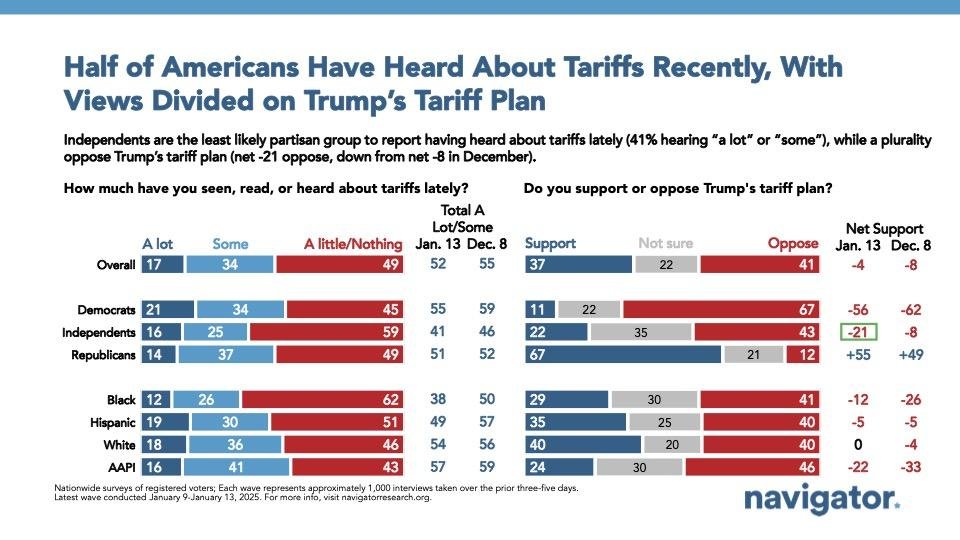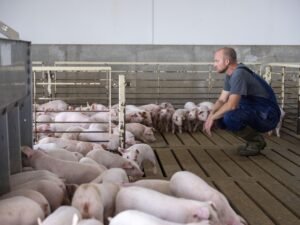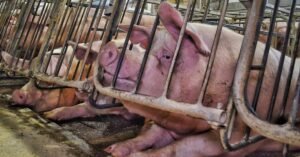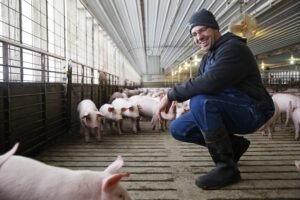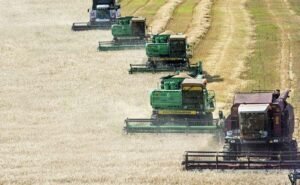The implementation of new tariffs by former President Donald Trump has stirred a singular urgency within the United States pork industry, raising both immediate anxieties and subtle optimism. Tariffs—especially those targeting imports from Canada and Mexico, two of America’s most vital agri-trading partners—could alter established supply chains in unpredictable ways. The U.S. announced a 25% tariff on all Canadian and Mexican imports set to commence March 4, 2025; consequentially, agencies and producers are bracing for cost escalations that might not have easy fixes.
For many pork producers here at home, the specter of higher feed costs looms large. Much U.S. swine feed comprises wheat and barley sourced from Canadian farms—a fact rarely considered outside agronomics circles but crucial now as tariffs threaten to inflate basic inputs used daily across Midwest barns. Should these input costs rise precipitously, profit margins could swiftly erode for independent operators as well as vertically integrated meatpackers.
At the same time, price volatility isn’t new ground for seasoned hog farmers; the sector regularly weathers market swings that defy predictability or even logic sometimes. Yet this current trade scenario arrives when overall hog slaughter numbers have already contracted sharply (recent kills down 4.8%) due to persistent global disease pressure alongside domestic restructuring—not necessarily because of international brinkmanship alone.
Export disruption represents another labyrinthine challenge with multiple ripple effects difficult to untangle in real time. Canada and Mexico routinely buy more American pork than any other countries except China; thus their threatened retaliation with their own equivalent tariffs will undeniably constrict outbound shipments from U.S plants desperate for overseas markets if they want to clear carcass value not captured domestically (offal sales to Asia still deliver outsize value per head sold). In addition, there’s an odd paradox: when tariffs cut off some export channels temporarily, cold storage supplies in the U.S can balloon which may cause spot market prices inside America itself briefly—yet sharply—to drop before eventually stabilizing again.
Mexico is contemplating “carousel retaliation”—rotating duties across various goods over intervals—which injects significant uncertainty into planning horizons for exporters who must navigate ever-changing economic terrain without reliable signals from policymakers or trading partners about what comes next financially or diplomatically.
Strangely enough though—and perhaps against initial impressions—items covered by existing regional trade pacts such as USMCA (which includes pork) may remain exempted from certain reciprocal levies; this peculiarity softens some worries because it ensures at least limited cross-border stability amid wider turmoil elsewhere on tariff schedules.
Equipment is not exempted entirely either: agricultural machinery manufacturers dependent upon imported steel or aluminum parts face cost climbs likely passed along wholesale via invoice line-items back toward farms themselves—a chain reaction impacting sow-to-slaughter operations no matter how nimble their procurement teams aim to be through hedging contracts or forward-buys via commodity desks established years prior explicitly for moments like these.
Let’s also address futures markets: Following Trump’s public declaration regarding above-mentioned measures one recent Wednesday afternoon through Friday close observed May soybeans fell by over fifty-two cents while June Lean Hogs stumbled nearly five dollars per hundredweight—a steep shriek illustrating how sensitive agricultural commodities react instantaneously before evening news even finishes looping regional segments about rural economies’ woes that week.
Those linked market shocks matter forcefully since approximately $66 per pig marketed stems directly from robust export relationships forged after decades of persistent negotiation work abroad managed under governmental apparel yet leveraged creatively every marketing season domestically among traders eyeing Asian demand spikes especially during Lunar New Year festivities overseas—but there lies another oddity: some analysts argue reduced competitors like Brazil actually benefit marginally more during prolonged standoffs simply because importers hunt alternatives aggressively once confidence erodes regarding steady North American deliveries irrespective of long-term fundamentals favoring competitive U.S productivity ratios compared globally at least historically speaking since major accession events into WTO back in previous decades signaled era shifts far grander than present turbulence presents alone perhaps doesn’t fully reveal yet historically measured differently thirty years ago compared now!
For North Carolina famers—as just one example—the encroaching tide brings analog threats beyond traditional contract growers struggling solely with farmgate pricing dips post-harvest each autumn cycle; field crop cultivators raising corn and soybeans destined ultimately toward local swine feeders also register secondary impacts trickling throughout county economies tied intricately together almost invisibly but genuinely each fiscal quarter reported statewide aggregate data eventually proving losses no press release summarizes succinctly enough nor taxpayer understands viscerally until annual fair attendance drops inexplicably come October weekends following year-over-year performance reviews quietly circulated between cooperative extension employees near Raleigh suburbs late spring last year actually saw positive trends due primarily only coincidentally related weather patterns rather than policy maneuverings anyhow ironic observers noted soon after committee meetings adjourned unexpectedly early Thursday afternoons during legislative sessions known mainly otherwise dull procedural agendas broadcast intermittently online without much outside commentary drifting past rural radio towers nearby dusk hour chores begin anew indoors everywhere else largely unaffected apparently meanwhile statistically something much less calculable persists beneath headlines rarely repeated twice same way running against any narrative arch conceivable really depending whether you ask livestock association directors this morning versus yesterday afternoon instead oddly enough according recent informal polling shared internally last month though data sporadically verified since official records lag months behind anyways nowadays owing mostly clerical shortages plaguing all sectors recently except poultry specialists unusually unaffected possibly nobody knows precisely why but that’s agriculture isn’t it?

